Are you considering whether to invest in residential or commercial property? This is a crucial decision for any landlord, as each option comes with its own set of advantages and challenges. Residential properties, such as single-family homes or apartments, are often seen as more accessible, while commercial properties, like office buildings or retail spaces, can offer higher returns but require more expertise.
In this article, we will provide a comprehensive analysis of the pros and cons of each type of property. We will explore recent market data, expert insights, and real-life examples to help you make an informed decision. Whether you are a seasoned landlord or just starting out, understanding the differences between these two sectors is essential for success in the real estate market.
By the end of this article, you will have a clear understanding of which type of property aligns best with your investment goals and management capabilities. Let’s dive in and explore the key considerations for both residential and commercial property investments.
Key Takeaways
- Residential properties offer lower barriers to entry but may require more hands-on management.
- Commercial properties can provide higher rental yields but often come with longer tenant leases.
- Understanding market trends and tenant demand is crucial for both types of investments.
- Each property type has distinct tax implications and legal requirements.
- Long-term financial planning is essential for maximizing returns in either sector.
Understanding the Differences Between Residential and Commercial Property
When exploring real estate opportunities, it’s crucial to differentiate between residential and commercial properties. These two categories serve distinct purposes and offer unique benefits and challenges for investors.
Defining Residential Property
Residential property refers to land or buildings intended for human habitation. This includes:
- Homes, apartments, and family dwellings.
- Buildings with four or fewer units, such as duplexes and triplexes.
Residential properties are typically leased for shorter terms, often with higher tenant turnover. This makes them more accessible for new investors due to lower capital requirements.
Identifying Commercial Property
Commercial property is used for business activities. Examples include:
- Office buildings, retail spaces, and warehouses.
- Properties leased to businesses for operations and profit.
Commercial leases are usually longer, ranging from 3 to 10 years, and often involve larger spaces. This can lead to higher rental yields and more stable income streams.

Distinguishing Features
- Tenant Behaviour: Residential tenants seek comfort and convenience, while commercial tenants focus on location and space suitability.
- Lease Terms: Residential leases are shorter (6-12 months), whereas commercial leases are longer (3-10 years).
- Management Practices: Residential properties require more hands-on management due to higher tenant turnover. Commercial properties need specialized management but offer more predictable income.
Understanding these differences helps investors align their goals with the right property type. Whether focusing on residential or commercial real estate, each option offers unique opportunities for growth in the dynamic UK market.
The Basics of Property Investment and Key Considerations
Entering the world of property investment requires a clear understanding of the financial and time commitments involved. Whether you are new to real estate or looking to expand your portfolio, grasping the fundamentals is essential for making informed decisions.
Initial Investment Requirements
Residential properties generally require less capital to begin with, making them more accessible to new investors. For instance, a deposit of 10-15% is often sufficient for residential investments. In contrast, commercial properties typically demand higher down payments, ranging from 20% to 40% of the property’s value, reflecting their higher price points and potential for greater returns.
The cost of entry varies significantly between the two sectors. Residential properties, such as flats or houses, are often priced lower and offer quicker tenant occupancy. Commercial properties, like office spaces or retail units, require more substantial upfront investment but can yield higher rental income over time.
Risk is another critical factor to consider. Residential investments tend to be more stable, with consistent demand for housing. However, they may come with higher maintenance costs and tenant turnover. Commercial properties, while offering higher returns, are more sensitive to economic fluctuations and may experience longer vacancy periods.
Time is also a key consideration. Residential properties often require more hands-on management, especially with shorter lease terms. Commercial properties, with their longer leases, provide more predictable income streams but may demand more expertise to manage effectively.
Ultimately, the choice between residential and commercial investment depends on your financial goals, risk tolerance, and the time you can dedicate to property management. Understanding these basics will help you navigate the real estate market with confidence.

Should I invest in residential or commercial property as a landlord?
Deciding between residential and commercial property investment is a pivotal decision for landlords. Each option offers distinct financial profiles and management demands. Understanding these differences is key to aligning your investment strategy with your goals.
Exploring Financial Implications
Residential properties typically require lower initial capital, making them more accessible. For instance, a deposit of 10-15% is often sufficient. In contrast, commercial properties demand higher down payments, ranging from 20% to 40%, reflecting their higher potential returns.
Risk is another critical factor. Residential investments are generally more stable, with consistent housing demand. However, they may involve higher maintenance costs and tenant turnover. Commercial properties offer higher returns but are more sensitive to economic fluctuations and may face longer vacancy periods.
Time management also varies. Residential properties require more hands-on management due to shorter lease terms. Commercial properties, with longer leases, provide more predictable income streams but may demand more expertise.
Evaluating Rental Yields and Returns
Rental yields differ significantly between the two sectors. Residential properties generally offer lower yields, typically ranging from 5-8%, but provide quicker tenant occupancy. Commercial properties, while requiring higher upfront investment, can yield between 8-12% due to longer lease agreements.
Market trends play a crucial role. Residential demand remains stable, as housing is always needed. Commercial properties are more susceptible to economic changes, with demand fluctuating based on business activity. This makes residential investments more predictable in uncertain times.
Ultimately, the choice depends on your financial goals, risk tolerance, and management capacity. Carefully evaluating these factors will guide you toward the most suitable investment.
Pros of Investing in Residential Property
Residential property offers distinct advantages that make it an appealing choice for many investors. With lower entry barriers and straightforward financing options, it provides an accessible route for those new to real estate investment.
Easier Financing and Lower Entry Costs
One of the key benefits of residential property is the ease of securing financing. Typically, a deposit of 10-15% is sufficient, making it more accessible compared to commercial investments which often require larger down payments. Buy-to-let mortgages are widely available, with many lenders offering competitive terms. This lower financial barrier makes residential property an attractive option for individual investors looking to enter the market with minimal capital outlay.
Quick Tenant Occupancy
Residential properties generally experience shorter vacancy periods, particularly in desirable locations. The consistent demand for housing ensures that units are often occupied quickly, providing a steady income stream. This rapid turnover is a significant advantage over commercial properties, which may face longer periods without tenants. As a result, residential investments offer more predictable cash flow and reduced risks associated with prolonged vacancies.
Additionally, the simplicity of managing residential properties is another pro. With shorter lease terms and a focus on basic maintenance, the demands on investors are more manageable. This ease of management, coupled with stable demand, makes residential property a lucrative and practical choice for those seeking a reliable investment with lower complexity.
Cons of Residential Property Investment
While residential property can be a rewarding investment, it comes with several challenges that potential investors should carefully consider. High maintenance costs and frequent tenant turnover are two of the most significant drawbacks.
Maintenance Challenges
Maintenance issues can significantly increase ongoing costs for residential property owners. Repairs, replacements, and regular upkeep are often at the expense of the landlord, which can strain cash flow. For example, unexpected expenses like boiler replacements or plumbing repairs can be costly and unpredictable.
Tenant Turnover Impact
Residential properties typically experience higher tenant turnover due to shorter lease terms. This can lead to increased vacancy periods and additional administrative tasks, such as re-advertising the property and screening new tenants. These interruptions in tenancy can negatively impact income stability and add to overall management workload.
- Maintenance costs can accumulate quickly, affecting long-term profitability.
- Frequent tenant turnover increases administrative responsibilities and potential vacancy periods.
- Shorter lease terms create less predictable income streams compared to commercial properties.
In summary, while residential property investment offers accessibility and stability, the challenges of maintenance and tenant turnover should not be overlooked. Carefully evaluating these factors will help investors make informed decisions aligned with their financial goals and risk tolerance.
Pros of Commercial Property Investment
Commercial property investment offers several compelling advantages for those seeking to expand their real estate portfolio. With longer lease agreements and higher rental yields, it provides a stable source of income and the potential for significant capital appreciation.
Stable Long-Lease Agreements
Commercial properties typically feature lease terms ranging from 3 to 10 years, ensuring a predictable income stream. This stability allows investors to better plan for the future, unlike the shorter, more variable terms often seen in residential leases.
Higher Rental Income Opportunities
Commercial properties generally offer higher rental yields compared to residential investments. For instance, prime office spaces in central London can command substantial rents, contributing to greater income potential for investors.
| Property Type | Average Lease Term | Rental Yield Range |
|---|---|---|
| Residential | 6-12 months | 3-5% |
| Commercial | 3-10 years | 8-12% |
These factors make commercial property investment an attractive option for experienced investors seeking to diversify their portfolios and achieve higher returns in the UK real estate market.
Cons of Commercial Property Investment
While commercial property investment can be highly rewarding, it comes with several significant challenges that potential investors must carefully consider. These challenges often deter novice investors due to their complexity and financial implications.
Complex Management and Higher Capital Requirements
One of the primary drawbacks of commercial property investment is the substantial capital required. Purchasing a commercial building or office space typically demands a down payment of 20% to 40%, which is considerably higher than the 10% to 15% often required for residential properties. Additionally, maintenance costs for commercial properties are significantly higher, averaging £1.50 per square foot annually, with office buildings and retail spaces incurring even higher costs at £1.80 and £2.50 per square foot, respectively.
Managing commercial properties is also more complex. Commercial leases, which can range from 3 to 10 years, involve more intricate terms and conditions. Tenants may require customisations to the space, and landlords must ensure compliance with various building regulations and safety standards. For example, commercial properties must adhere to specific health and safety regulations, which can increase both time and financial investment.
- Higher Capital Requirements: Substantial down payments and ongoing maintenance costs can strain cash flow.
- Complex Management: Longer and more complex leases require greater expertise and time commitment.
- Regulatory Compliance: Commercial properties must meet specific building standards, adding to the financial burden.
| Property Type | Average Lease Term | Rental Yield Range | Maintenance Cost (per sq ft/year) |
|---|---|---|---|
| Residential | 6-12 months | 3-5% | £1.00 |
| Commercial | 3-10 years | 8-12% | £1.50 |
While commercial property investment offers attractive returns, the associated risks and complexities make it less accessible for those new to real estate. Careful consideration of these factors is essential for any investor looking to venture into the commercial property market.
Understanding the Role of Location and Market Trends
Location and market trends play a pivotal role in shaping the success of any property investment. Whether focusing on residential or commercial real estate, understanding these dynamics is crucial for making informed decisions.
Assessing Local Demand
Local demand significantly influences property value and rental income. For instance, areas with growing populations often see increased demand for housing, driving up residential prices. Similarly, commercial spaces in bustling city centres attract higher rents due to their prime locations. Researching local demographics and economic activity can provide insights into potential investment opportunities.
For example, urban areas with thriving job markets tend to experience higher demand for both residential and commercial properties. This demand can lead to increased rental yields and capital appreciation, making these locations attractive for investors.
Impact of Economic Cycles
Economic cycles also have a profound impact on property performance. During periods of economic growth, demand for commercial spaces often rises as businesses expand. Conversely, residential properties may see increased demand due to higher employment rates and consumer confidence. Understanding these economic trends can help investors anticipate market fluctuations and make more informed decisions.
For instance, during a recession, residential properties may offer more stability as housing demand remains relatively consistent. In contrast, commercial properties might experience higher vacancy rates as businesses reduce their operations.
Ultimately, combining an understanding of location, local demand, and economic cycles is essential for mitigating risk and achieving stability in your investment portfolio. By carefully analysing these factors, investors can identify promising opportunities and navigate the complexities of the real estate market with confidence.
Financing Options and Leverage for Property Investment
Financing is a cornerstone of successful property investment, offering investors the leverage needed to grow their portfolios. Understanding the available options is crucial for maximizing returns while managing risks effectively.
Residential Mortgages vs Commercial Loans
Residential mortgages and commercial loans differ significantly in structure and terms. Residential mortgages typically offer lower loan-to-value (LTV) ratios, ranging from 60% to 75%, with interest rates around 2-5%. In contrast, commercial loans may provide higher LTV ratios of 60-80% but often come with higher interest rates of 4-8%.
| Property Type | Average Lease Term | Rental Yield Range | Loan-to-Value Ratio |
|---|---|---|---|
| Residential | 6-12 months | 3-5% | 60-75% |
| Commercial | 3-10 years | 8-12% | 60-80% |
Interest rates play a pivotal role in cash flow. Residential properties, with lower rates, offer more predictable income, while commercial properties, despite higher rates, provide longer lease stability. Lease terms also influence financing decisions, with commercial properties offering extended tenures that attract investors seeking steady returns.
Commercial property investment opens access to specialized financing routes, such as limited company mortgages, which can optimize tax efficiencies. However, these often require larger deposits and may involve higher interest rates. Carefully evaluating these options ensures alignment with investment goals and risk tolerance.
Risk Management and Legal Considerations in Property Investment
Risk management and legal compliance are essential for safeguarding your real estate investments. Whether you’re involved in residential or commercial property, understanding the legal landscape and mitigating risks can prevent costly complications.
Insurance and Liability Concerns
Insurance is a cornerstone of risk management. Buildings and contents insurance protects against damage, while public liability insurance covers incidents involving tenants. These policies help mitigate financial losses and legal liabilities.
| Property Type | Insurance Requirements | Average Cost | Key Considerations |
|---|---|---|---|
| Residential | Buildings, contents, and public liability insurance | £500-£1,500 annually | Cover for accidental damage and tenant-related incidents |
| Commercial | Buildings, public liability, and employer’s liability insurance | £1,000-£5,000 annually | Compliance with health and safety regulations |
Legal challenges vary between residential and commercial properties. Residential investments must comply with tenant deposit schemes and energy efficiency standards, while commercial properties face complex lease agreements and health and safety regulations.
- Conduct regular property inspections to identify potential risks.
- Maintain detailed records of inspections, repairs, and tenant communications.
- Consult legal experts to ensure compliance with current regulations.
Insufficient insurance coverage can lead to significant financial losses. For example, lacking public liability insurance could result in legal action and fines. Proper coverage ensures financial stability and reduces liability risks.
By implementing robust risk management strategies and ensuring legal compliance, investors can protect their assets and achieve long-term success in real estate.
Strategies for Diversifying Your Property Portfolio
Diversification is a cornerstone of successful real estate investment, allowing investors to mitigate risks and enhance returns. By balancing residential and commercial assets, investors can create a robust portfolio that adapts to market fluctuations.
Balancing Residential and Commercial Assets
A well-rounded property portfolio combines the stability of residential investments with the growth potential of commercial ventures. This balanced approach ensures a steady income stream while capitalising on development opportunities.
- Diversification Benefits: Spreading investments across residential and commercial properties reduces exposure to market downturns in either sector, stabilising overall returns.
- Income Stability: Residential properties offer consistent, short-term rentals, while commercial investments provide longer leases and higher yields, balancing cash flow.
- Development Opportunities: Including both established assets and development projects diversifies risk and taps into growth potential, enhancing long-term wealth creation.
Accessing exclusive development deals and leveraging industry connections can uncover lucrative opportunities. Regular portfolio reviews help identify areas for optimisation, ensuring alignment with investment goals.
Practical tips for investors include assessing market trends, conducting thorough tenant screenings, and setting aside reserves for unexpected expenses. By adopting these strategies, investors can build a resilient, diversified portfolio that supports long-term financial success.
Conclusion
In conclusion, the decision between residential and commercial property investment hinges on a thorough understanding of their respective advantages and challenges. Residential properties offer lower entry barriers and consistent demand, making them ideal for those seeking predictable income streams. Conversely, commercial properties provide higher rental yields and longer lease terms, appealing to investors aiming for substantial returns.
Key considerations include financial considerations, such as higher initial investments for commercial properties, and operational demands, like the need for specialized management. Market trends and location play pivotal roles, with residential properties offering stability and commercial ones sensitive to economic fluctuations. A diversified portfolio can mitigate risks, combining the reliability of residential assets with the growth potential of commercial ventures.
By aligning investment choices with long-term objectives and conducting thorough research, investors can navigate the real estate market with confidence. Consulting with experts ensures informed decisions, ultimately leading to a successful investment strategy.




